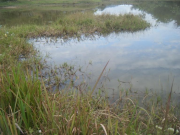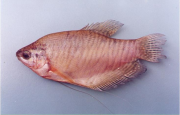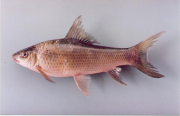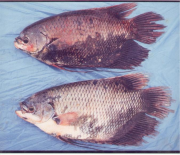These are either natural or man-made water bodies that may or may not be connected to the Nam Ton mainstream and, or its tributaries during the wet season months. Some of these water bodies are privately owned and are “closed access” whereas others are “open access”. Some of them never “dry out” completely, but expand greatly during the wet season months and are therefore perennial water bodies, whereas others do “dry out” altogether in the dry season and are not perennial. Sometimes they are considered as community ponds and may be stocked as a collective effort by a whole village, whereas others are sometimes connected to rivers and streams in the flood season. Water-gates fitted to places where river waters enter can be lowered at peak flood thus retaining both water and fish.
|
Seasonal village back-swamps |
Installation of concrete-metal sluice gates to trap flood waters entering from rivers and streams. |
|
Stocking with fingerlings of exotic and, or native species of fish that have undergone a one month nursing period in nylon net cages prior to release. Fish must be at least 4cm in total length prior to release. Permanent back-swamps that are full of large growths of macrophyte material can contain highly predatory large Pba Kaw (snakehead) that will devour small fish < 4cm with ease and can account for very high mortality rates. |
|
|
Control of theft by outside individuals by using a policing system of some sort. Usually this is a designated person (s). Control of illegal fishing methods can form part of the policing. |




